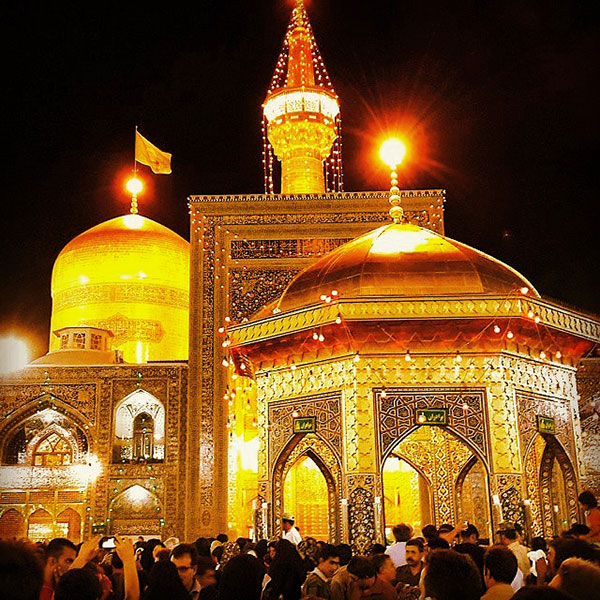As stated before, the Shia is steadfast in his belief that Caliphate is
„appointed by God‟. They also believe that Imamate after the Prophet
(peace be upon him and his descendants) resembles prophethood in
some aspects. Like the Prophet (peace be upon him and his
descendants), it is Allah, who appoints the Prophet‟s successors.
The chronicle of the Prophet‟s life bears witness to this fact, because
he has introduced Ali (a.s) as his successor in various cases, including:
1- At the advent of his prophetic mission:
When being commissioned to invite his relatives to
monotheism in accordance with the verse االقربين عشيرتك وانذر
(And warn your tribe and near kinsmen)*
, the Prophet (peace
be upon him and his descendants) addressed them as saying,
“Whosoever assists me in this way is my successor,
minister, and executor”.
The Prophet (peace be upon him and his descendants) phrased his
words as saying,
فايكم يوازرني في هذا المر علي ان يكون اخي و وزيري و خليفتي و وصيي فيكم
(Who does assist me in this way to be my brother, minister,
executo, and successor among you?”)
The only one who responded positively to this heavenly
proclamation was Ali (a.s), the son of Abu Talib.
Then, the Prophet (peace be upon him and his descendants) went on,
* ان هذا اخي وصيي و خليفتي فيكم فاسمعوا له و اطيعوه
(He [Ali] is my brother, executor, and successor among you;
listen to his words and follow him”.)
2- In Tabuk battle:
The Prophet (peace be upon him and his descendants) told Ali (a.s),
** اما ترضي ان تكون مني بمنزله هارون من موسي اال انه النبي بعدي
*
Shoara Sura, verse no. 214
* Tarikh Tabari, vol.2, p. 62-63; Tarikh Kamel, vol.2, p.40-41; Mosnad Ahmad,
vol.1, p.111; A Commentory on Nahjul Balaghah, Ibn Abil Hadid, vol.13, p.210-12.
** Sireh, Ibn Hesham, vol.2, p.520; Alsavaegh Ul-Mohareghah, Ibn Hejr, section 9,
chapter 2, p.121
(“Are you not pleased to know that you are to me like Aaron to
Moses, except that there will exist no prophet after me”.)
It denotes that as Aaron was the immediate successor of Moses, Ali
(a.s) was the Prophet‟s successor, too.
3-In the 10th year of Hijrah:
When returning from his last pilgrimage to Mecca, the Prophet
(peace be upon him and his descendants) introduced Ali (a.s) as the
Muslims and believers‟ guardian in a region, called „Ghadir Khum‟ in
a big congregation as saying,
من كنت مواله فهذا علي مواله
(“Henceforth, Ali is the guardian of those I have been their
guardian”.)
To begin with, the Prophet (peace be upon him and his descendants)
stated,
الست اولي بكم من انفسكم؟
(“Am I not superior to your selves than you?) And the Muslims
stood up confirming him unanimously. Therefore, the term مولي
(guardian) in this hadith signifies the superiority and the guardianship
over the believers. From this statement, it is deduced that the Prophet
(peace be upon him and his descendants) highlighted the same
guardianship position of himself for Ali (a.s). It occurred on the same
day that Hasan Ibn Thabet versified the historical movement of
„Ghadir‟ and composed the following poems:
يناديهم يوم الؽدير نبيهم بخم واسمع بالرسول مناديا
فقال فمن موالكم و نبيكم؟ فقالوا و لم يبدوا هناك التعاميا
الهك موالنا وانت نبينا ولم تلق منا في الواليه عاصيا
فقال له: قم يا علي فانني رضيتك من بعدي اماما و هاديا
فمن كنت مواله فهذا وليه فكونوا له اتباع صدق مواليا
* هناك دعا: اللهم وال وليه وكن للذي عادي عليا معاديا
Ghadir hadith is one of the Islamic successive hadiths, which, in addition to the Shia illuminate figures, has been narrated by
about 360 Sunni Scholars (for instance, refer to the book „Savaeq Ul-
Moharaghah‟, Ibn Hajr, Section 9, Chapter 2, p.122), and there exist
the documents, which show the approval of 110 of the Prophet‟s
disciples. Besides, 26 brilliant learned have written separate books
concerning the documents, proving the authenticity of this hadith.
Abu Jafar Tabari, the famous Muslim historian, has collected the
documents, dealing with this theme in two thick volumes. For further
information, refer to the book „Al-Ghadir‟.
Book: Shis responses
* Al Managhib, Kharazmi Maleki, p.80; Tazkerah Khas Al-Oma, Sebt Ibn Jozi
Hanafi, p. 20; Kefayatul Talib, Ganji Shafei, P.17,


















